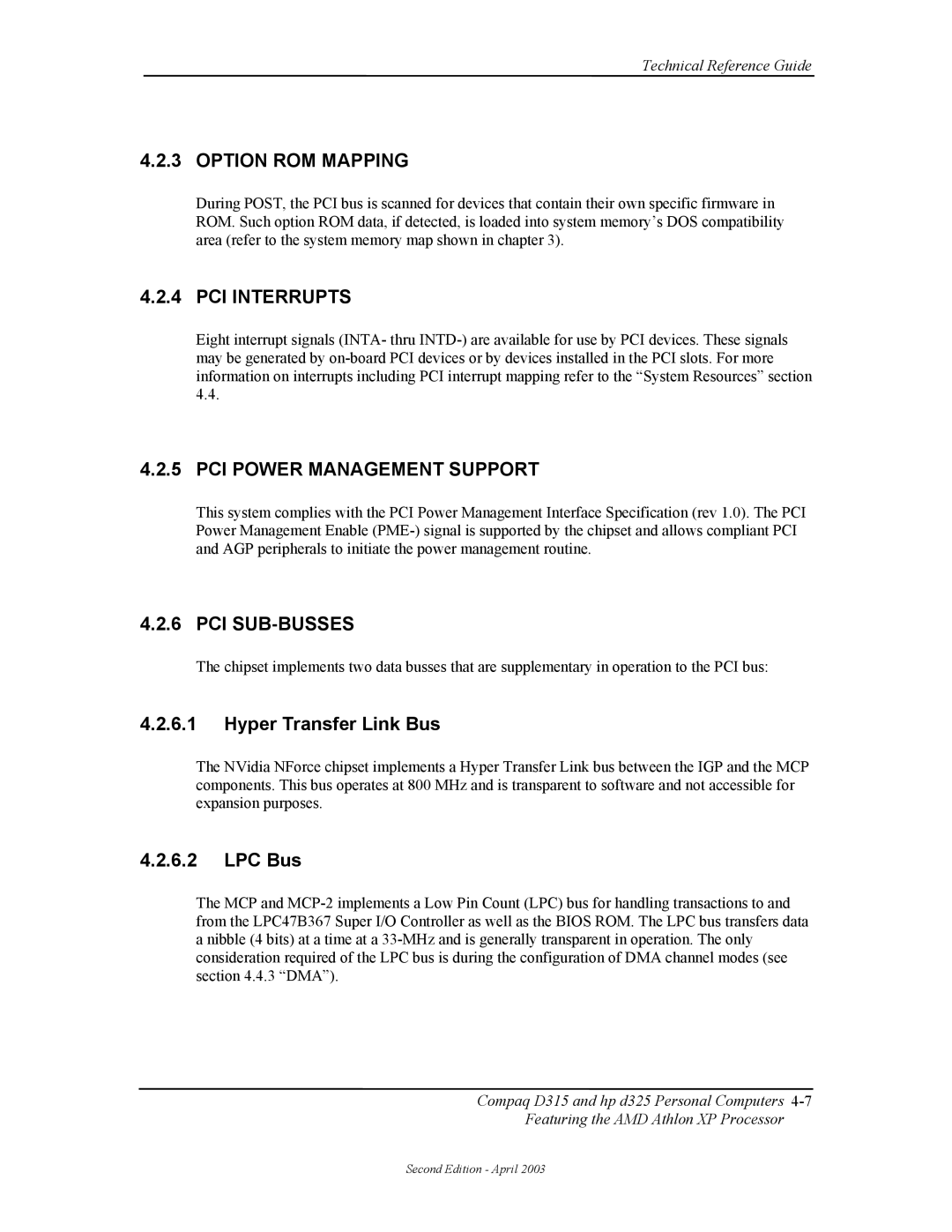
Technical Reference Guide
4.2.3 OPTION ROM MAPPING
During POST, the PCI bus is scanned for devices that contain their own specific firmware in ROM. Such option ROM data, if detected, is loaded into system memory’s DOS compatibility area (refer to the system memory map shown in chapter 3).
4.2.4 PCI INTERRUPTS
Eight interrupt signals (INTA- thru
4.2.5 PCI POWER MANAGEMENT SUPPORT
This system complies with the PCI Power Management Interface Specification (rev 1.0). The PCI Power Management Enable
4.2.6 PCI SUB-BUSSES
The chipset implements two data busses that are supplementary in operation to the PCI bus:
4.2.6.1Hyper Transfer Link Bus
The NVidia NForce chipset implements a Hyper Transfer Link bus between the IGP and the MCP components. This bus operates at 800 MHz and is transparent to software and not accessible for expansion purposes.
4.2.6.2LPC Bus
The MCP and
Compaq D315 and hp d325 Personal Computers
Featuring the AMD Athlon XP Processor
Second Edition - April 2003
